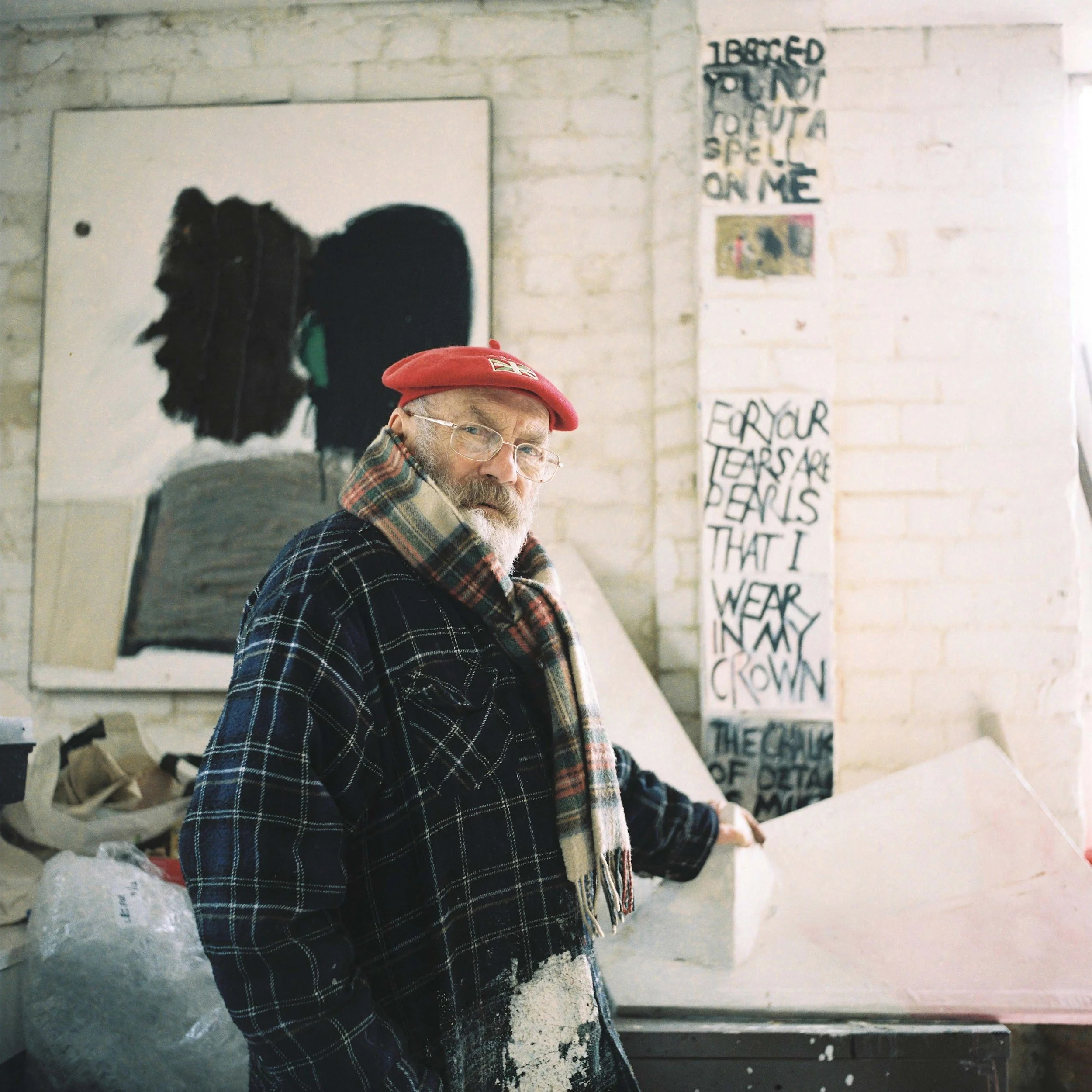John Blackburn
Original Abstract Paintings
John Blackburn is an English artist known for his mixed media, abstract paintings.
His artwork is created using mixed materials, sometimes featuring resin, grit, house-paint and varnish, are layered onto the distinctive surfaces of John Blackburn’s paintings before they are completed with acrylic, oil and encaustic.
Incorporating found objects, Blackburn roots his work firmly in the present world but seeks metaphorical connections to the physical and spiritual body. Using, as he puts it, ‘everything and anything,’ his work draws parallels with Arte Povera artists, Alberto Burri and Antoni Tàpies.
Artworks by John Blackburn
John Blackburn’s incredible history…
The early years of Blackburn's life were marked by a supportive family in a tiny village near Luton, where he was born in 1932. He attended Margate School of Art for three years after turning 14 and specialised in textile design before being recruited into the Royal Air Force. To escape the post-war austerity of Britain, Blackburn travelled to Malaysia, the Pacific Islands (including New Zealand), and the Far East after being discharged from the military.
In the southern hemisphere, he met and fell in love with Maude McKinnon, a remarkable woman who had founded New Zealand's first modelling agency. John's life as an artist was impacted by a combination of factors: the pressure of supporting a small family, the regional focus of New Zealand's art scene in the 1950s, his lack of exposure to outside influences, and a commitment to self-study that would have a lasting impact on his future work.
A sequence of enormous experimental paintings with a new abstract force were created by Blackburn before he left New Zealand. The artist's breakthrough came with the "Encaustics series," un-stretched sheets of hardboard painted with oil and household paints before being scorched and burned. One collector acquired the entire series, which allowed the artist to return to the United Kingdom in 1961 with a renewed sense of artistic self-assurance. Ben Nicholson, Victor Pasmore, Terry Frost, and others exhibited alongside Blackburn in John Moores' Liverpool Biennale that year, and he exhibited at Woodstock Gallery the following year. Jim Ede, a well-known art collector and gallerist, discovered Blackburn's work at Kettle's Yard, Cambridge, where he displayed it among works by Peter Lanyon, William Scott, and Roger Hilton.
An illness that threatened to take the young Victoria Blackburn's life in the mid-1960s had a lasting impact on their lives for the rest of the decade. She underwent three kidney transplants, one from her father, as a result of experimental treatments, which had a tremendous impact on both his personal and professional life.
Blackburn's creative energy found a new outlet after the relief of Victoria's final recovery and a remarkable 3,400-mile charity walk around the coast of the UK in 1979 to raise awareness of kidney transplants. It was in the 1980s that John and his wife Maude founded a hand-crafted collectibles business called 'Canterbury Bears,' which specialises in bespoke and one-of-a-kind designs. John was awarded an MBE in 2013 for his contributions to manufacturing and export, bringing the family business's success and reputation to an all-time high. When John Blackburn's business was taken over by Maude and daughter Kerstin at the turn of the 2000, he returned to painting with new focus.
The early 2000s were a time of prolific painting, and a chance discovery by noted art collector Christopher Penn sparked public interest in both Blackburn’s new and retrospective work. His exhibition at the Metropole Galleries in Folkestone in 2006 (his first in a commercial gallery since 1967) received widespread critical acclaim.
Photo by Ian Massey
